‹ Back to the homepage About Kadaza Tips
All Home & Garden Family Health Food Life
Online Food Delivery
December 03, 2021

Online Food Delivery
Of course it's great to eat out. But when you’re cozy at home, or on a deadline, or just don’t feel like venturing out, dining in is so much simpler. In recent years, food delivery services have proliferated, serving as app- or website-based middlemen between restaurants and consumers. While the pandemic definitely boosted their growth, the popularity of ordering in predates stay-at-home orders. In this guide, we have reviewed the most commonly used food delivery services, like Uber Eats, Grubhub and Doordash.
Kadaza is reader-supported. When you buy through links on our site, we may earn an affiliate commission.
The Best Food Delivery Services
So which online food delivery service should you use? Uber Eats or GrubHub? ChowNow or Caviar? Seamless or DoorDash? To help narrow it down, we've reviewed the best online food delivery services below.
Grubhub is one of the leading food delivery services, along with Uber Eats and DoorDash. With an easy-to-use platform, Grubhub delivers from more than 300,000 restaurant partners in 4,000 cities. Delivery is under $7 for most orders; or for $9.99 a month, you can subscribe to Grubhub+ for zero delivery fees. The company doesn’t use surge pricing, so they’re a great choice for popular mealtimes. Unlike most platforms, the offer Grubhub sends its drivers includes the entire expected payout. A generous tip means your order is likely to be snapped up quickly.
Uber isn’t just about ridesharing. In fact, their food delivery branch, Uber Eats, has zoomed past Grubhub to capture a quarter of the market share. Delivery fees are typically $3.99, in addition to service fees. Or for $9.99 a month, you can subscribe to the company’s Eats Pass for free delivery. Just like with Uber rideshares, surge pricing takes effect when demand is high and there aren’t as many available drivers. On the flipside, Uber Eats prices are some of the lowest among food delivery apps. And with no minimum orders, you’ll need another excuse to add that second set of mozzarella sticks.
In the food delivery hunger games, DoorDash is the obvious victor, representing half the American market share. And yet there’s still room to grow: the company recently acquired Wolt, a European food and retail delivery service. Whatever dish fills your daydreams, DoorDash is likely to have it—and dash it to your doorstep in record time. Delivery is free for orders $15 or more; $2 for smaller orders; or forever-free with a subscription to DashPass for $9.99 a month. DoorDash also charges a flat rate service fee of $2 to $6, as well as a surge fee during busy times.
Sometimes, you want artisan hipster pizza, topped with smoked trout and edible glitter. Other times, you want a hot slice of the thick, cheesy, old-school pizza from your childhood. Like Domino’s. If you grew up in the 70s, 80s, or 90s (or you’re still working on it today), you’ll find ordering Domino’s online beats calling on a landline. Domino’s HotSpots even offers delivery to select places without addresses, such as parks, beaches, or the sidelines of that never-ending soccer game. Delivery fees vary by location, and tips aren’t included—like the olden days, cash is welcomed.
Seamless is a true original, dating back to the party days of late 1999. The company swiftly outgrew its New York roots, finally merging with Grubhub in 2013. Since Seamless entered the marriage with a diehard fanbase, the company remains a separate brand. Well, kind of: beyond names and branding, Seamless and Grubhub have virtually identical apps, websites, user experiences, and fee structures. Both offer the same massive selection of restaurants. Even the drivers are the same, picking up orders from either app. So how do you choose? Flip a coin.
In the mood for fast food? You won’t find it on Caviar—the premium branch of DoorDash. Unlike twinsies GrubHub and Seamless, Caviar hosts a different selection of restaurants than DoorDash, as well as a more refined user experience. Limited to large cities like Los Angeles, Seattle, Dallas, Chicago, Portland, and Philadelphia, Caviar’s curated list of hip eateries includes spots that don’t offer delivery otherwise. Service fees are on the higher side, and delivery fees vary between markets. Subscribing to DashPass for $9.99 per month lands you free delivery for both Caviar and DoorDash (which does include fast food).
Unlike all the meal-focused delivery services above, Instacart is a “personal shopper” service. Just log in, order a cartful of food from your favorite supermarket (or three), and an Instacart shopper will navigate the aisles for you, bag up the goods, and leave them at your door. If the store is out of something, your shopper can skip it, or sub an alternative. (Usually the right one!) You can also shop from other kinds of retailers, like Sephora, BestBuy, Dollar Tree, and more. While default delivery times for meal apps is “as soon as humanly possible,” Instacart’s less time-sensitive nature allows flexibility in scheduling. Delivery starts at $3.99, but an Instacart Express membership nabs you free delivery on orders over $35.
Postmates is another true original in the delivery space. Purchased by UberEats in December 2020, its quirky branding still reflects its San Francisco heart, with visions of bicycle messengers soaring down hilly streets. Whatever you seek, Postmates couriers will find it, stopping by grocery stores, pharmacies, and other shops as well as restaurants. Delivery is a flat fee of $3.99 for partner restaurants, or $5.99 for other spots. Along with a 9% service fee, a small-cart fee for tiny orders, and blitz pricing during peak hours, it can add up. To save cash, try choosing the “Party” option for free delivery from popular spots. Or you’re a frequent user, join Postmates Unlimited for unlimited free delivery, and no blitz pricing or small cart fees.
While other apps offer a plethora of cuisine options, Slice is all about pizza. Lots and lots of pizza: their marketplace includes more than 17,000 pizza joints in all 50 states. It can be hard for local, independent pizzerias to compete with big, corporate chains. Slice provides them with large-scale tech and marketing, expanding their customer base and expediting delivery to hungry bellies. Deep Dish or Thin Crust? White sauce or red? We’re not here to argue. Slice lets you browse by pizza type: New York, Sicilian, Gluten-Free, Stuffed, and more, as well as pizza-adjacent dishes like calzones and pasta. You can even outsmart your appetite by scheduling orders in advance.
ChowNow is a platform for ordering food, not a food delivery service. When appetite strikes, that distinction might not matter much. But with ChowNow, your order is delivered by the restaurant’s staff, rather than a ChowNow contractor—which means they don’t take commission fees from the restaurant. Options are more limited, since not all restaurants offer delivery. The upside is that ChowNow’s technology lets customers order food in new, interesting ways, like via a restaurant’s Facebook page or Instagram profile. Plus, their commission-free structure means you’re helping support the restaurants you love.
There’s delivery, and then there’s microdelivery. Gopuff focuses on “daily essentials, delivered in minutes.” They’re not kidding: average delivery time is less than half an hour. Now serving 1000+ cities, Gopuff’s micro-fulfillment centers are stocked with thousands of items, from candy bars to baby food, over-the-counter medicine to cleaning products, phone chargers to dog leashes (since Nimbus just chewed his in half. Again). Need wine? Gopuff acquired BevMo in late 2020, and happily delivers alcoholic items to 21-ups where allowed. They’re open late, even 24/7 in many areas. Delivery is a flat $1.95, or join “the Fam” for free delivery.
• There are many more online sites to order food. Visit our extensive overview of all popular food delivery services on the internet.
• Nowadays there are also more and more meal delivery services to choose from if you’re looking to save some time in the kitchen or for a healthier and cheaper alternative to take out and traditional food delivery.





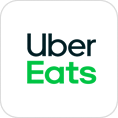
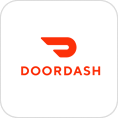
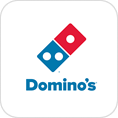


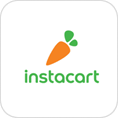
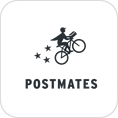
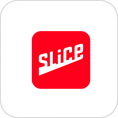


 Join us on Facebook
Join us on Facebook




 .
.